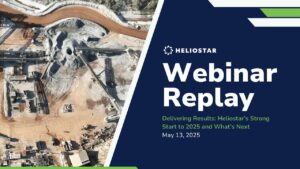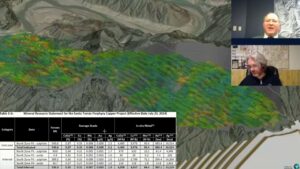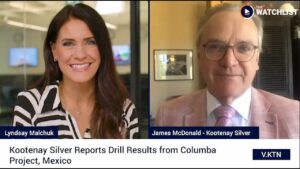Vancouver, B.C. – Prospero Silver Corp. (TSXV: PSL) (“Prospero” or the “Company”) is pleased to announce that it has acquired by staking the 7,256 hectare Pachuca SE project located 24km southeast along strike of the historic veins of the Pachuca-Real del Monte mining district (Figure 1). This new project acquisition is part of a systematic exploration program in the Mexican Altiplano and reflects Prospero’s strategy of creating value as a Mexico-focused project generator. Pachuca SE will be added to the Company’s portfolio of 100% owned projects available for joint venture.
Pachuca SE is located within the same regional-scale sequence of volcanic rocks of predominant intermediate composition (The Pachuca Group), which hosts the historic Pachuca-Real del Monte mining district (Pachuca Mine) (Geyne et. al., 1963: Consejo de Recursos Minerales No Renovables Publication 5E, 203 p). The Pachuca Mine represents the second largest epithermal deposit in Mexico with total production estimated in the order of 80 M tons with an average grade of 500 g/t Ag, and 2.5 g/t Au (Albinson et. al., 2001: SEG Special Publication Series No. 8, p. 1-32).
The Pachuca SE geology is typical of a high level epithermal environment with the following characteristics:
- Location along strike of one of the world’s largest epithermal precious metal deposits;
- Attractive gold and silver high level geochemistry when compared to the geochemical signatures of the Vizcaina structure above the Pachuca Mine;
- A similar assemblage of clay minerals in the argillic alteration cap of both systems;
- Association with a more felsic volcanic pile than the Pachuca-Real del Monte host rocks;
- An erosional window that exposes several structures for a length of 5km across the system.
GEOLOGY.
The Pachuca Group in the area of the historic Pachuca Mine consists predominantly of a thick pile of andesitic volcanics. In the Pachuca SE area the volcanic pile is more felsic in composition consisting primarily of dacite tuffs, pyroclasitic flows and lapilli tuffs, and overlying rhyolite ignimbrites. In the northern sector of the Pachuca SE project both dacite plugs and dikes intrude the volcanics and in the southern Cerro Varal sector, a vertically banded commonly spherulitic rhyolite dike/dome phase intrudes the rhyolite ignimbrites (Figure 2).
Northwest and east-west striking structures and alteration zones have been mapped and sampled where exposed in outcrop. These occur in shallow mines, in open cuts of road building material and in open pits, which are actively being mined for clay. The strike length of the structures and alteration zones, recognized to date, range from 600m to 2,200m. Some may be significantly longer in that they are covered by the younger volcanics both to the east and west (Figure 2). The structures dip both to the north and south and tilt the host rocks predominately to the north.
Hydrothermal alteration and silica veining is closely associated with the structures. Illite-inter-stratified illite/smecitite-pyrite dominated alteration is associated with the northern and central sector of the system, whereas in the Cerro Varal southern sector the alteration is characterized by alunite-kaolinite-dickite and silica invasion.
The Cerro Varal is the longest east-west striking structure exposed in the project area (2.2km) and outcrops as vertically oriented reefs up to 20m wide. The zoning of alteration suggests a deeper geologic level is exposed in the north and middle sectors of the project area, whereas the top of the system with acid-sulfate alteration occurs along the crest of Cerro Varal.
A total of 134 rock-chip samples have been obtained from the Pachuca SE project. The highest precious metal and zinc geochemistry occurs in the northern sector with anomalous gold assays in the 0.1 to 0.61 ppm range, silver assays in the 1.0 to 2.92 ppm range, and zinc assays of 100 to 5,290 ppm. These values coincide with the presence of narrow coarse crystalline quartz and calcite veins and iron oxides closely associated with the mapped structures. In the Cerro Varal area the intrusive rhyolite hosts numerous pyrite-rich veins along an exposed length of 900m. The veins consist of cryptocrystalline quartz carrying anomalous values of barium (up to 3780 ppm), molybdenum (up to 561 ppm), and arsenic (up to 209 ppm), exhibit dickite alteration in the rhyolite intrusive wallrocks, and occur immediately below the cap of advanced argillic alteration (alunite-kaolinite). Numerous workings and shafts up to 30m deep were developed by the old timers along the pyrite-silica rich veins.
Comparison with Pachuca’s high level alteration
Rock-chip sampling (11 samples) of the Vizcaina structure above the old Pachuca Mine and along road cut exposures located 100-200m above known orebodies assayed only at the limit of detection for gold (<0.002 ppm) and silver (<0.02 ppm), and weak zinc anomalies (<144 ppm), from scarce crystalline quartz and calcite veinlets within a halo of illite-pyrite alteration. The structural, geochemical and hydrothermal alteration similarity of the Pachuca SE system with the high level epithermal environment that overlies the Pachuca Mine veins, was likely recognized by the Pachuca-Real del Monte operators over a hundred years back, in that they developed several levels over a hundred meters in length and shafts over 30m deep along the Pachuca SE structures, most likely expecting to find the top or apex of orebodies.
Not uncommonly, important epithermal precious metal deposits in Mexico are closely time-related with emplacement of domes of felsic composition, or include significant volumes of felsic volcanic rocks in the pre-mineral phases of volcanism (rhyolites to dacites). Examples include:
- The Guanajuato district – the Chichindaro felsic dome phase,
- Fresnillo – the Cerro Christo and Linares (Juanicipio) rhyolites,
- Bacis (Durango) – a pre-vein dacitic volcanic pile and a felsic dome phase,
- Cienega (Durango) – a felsic dome phase,
- Tayoltita – thick sections of rhyolites in the host rocks, and
- Pachuca itself, which exhibits, banded pre-vein rhyolite dikes.
About Prospero Silver Corp.:
Prospero is a Canadian resource company with the majority of its staff based in Mexico and who work for its wholly owned subsidiary Minera Fumarola, SA de CV (Fumarola). Following a project generator model to de-risk exploration and minimize dilution, the Company has a growing portfolio of high-quality projects and has been successful in finding strong partners.
For further information please contact:
William Murray
Chairman
Tel: (604) 288-7813
or
Kirk Gamley
Contact Financial
Tel: (604)561-3642
Forward-Looking Statement Cautions:
This news release contains certain “forward-looking statements” within the meaning of Canadian securities legislation, relating to the closing of a non-brokered Private Placement. Although the Company believes that such statements are reasonable, it can give no assurance that such expectations will prove to be correct. Forward-looking statements are statements that are not historical facts; they are generally, but not always, identified by the words “expects,” “plans,” “anticipates,” “believes,” “intends,” “estimates,” “projects,” “aims,” “potential,” “goal,” “objective,” “prospective,” and similar expressions, or that events or conditions “will,” “would,” “may,” “can,” “could” or “should” occur, or are those statements, which, by their nature, refer to future events. Factors that could cause actual results to differ materially from these forward looking statements include, but are not limited to, variations in the nature, quality and quantity of any mineral deposits that may be located, the Company’s inability to obtain any necessary permits, consents or authorizations required for its planned activities, and the Company’s inability to raise the necessary capital or to be fully able to implement its business strategies. The reader is referred to the Company’s reports, publicly available through the Canadian Securities Administrators’ System for Electronic Document Analysis and Retrieval (SEDAR) at www.sedar.com, including the risk factors discussed in Prospero’s November 27, 2009 prospectus. Except as required by securities laws and the policies of the TSX Venture Exchange, Prospero disclaims any intention or obligation to update or revise any forward-looking statement, whether as a result of new information, future events or otherwise.
There is no certainty further exploration will lead to the discovery of a deposit similar to the Pachuca Mine.
Neither the TSX Venture Exchange nor its Regulation Services Provider (as that term is defined in the policies of the TSX Venture Exchange) accepts responsibility for the adequacy or accuracy of this release.

Click to Enlarge

Click to Enlarge

















